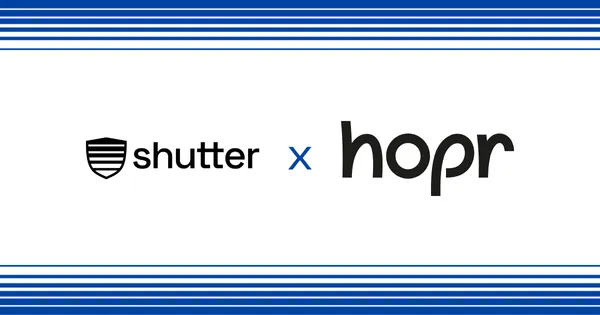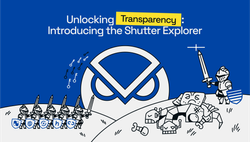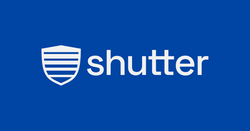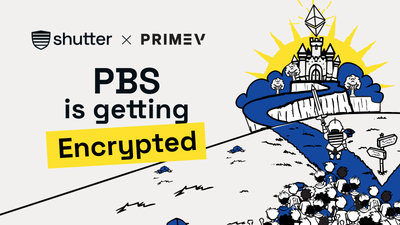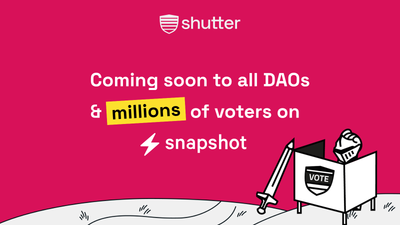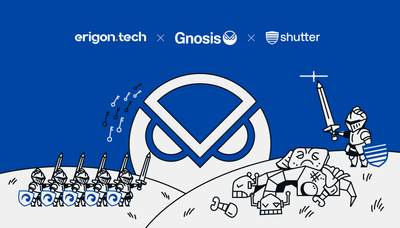In the future, getting as close as possible to full end-to-end encryption will be essential for privacy, censorship resistance, and giving people more control over their data. Shutter and HOPR are at the forefront of this effort. Shutter enhances transaction security on chains by preventing front running with its encrypted mempool, while HOPR focuses on metadata privacy and user anonymity through advanced techniques like onion routing and mixnets for data transfer. Together, they aim to create a comprehensive privacy and security framework for blockchain environments. The potential for a unified privacy SDK collaboration between Shutter and HOPR could streamline integration and significantly enhance privacy for developers across multiple platforms.
Unified Encryption Efforts; Two Different Approaches
Shutter’s Shielded Trading: Enhancing Transaction Security with Encrypted Mempools
Shutter’s flagship innovation, Shielded Trading, features an encrypted mempool designed to prevent malicious actors from accessing and exploiting transaction data for front running. The main goal of encrypted mempools is to achieve front running and real-time censorship resistance. In Shutter’s July 2024 integration on the Gnosis Chain, Shutter’s encrypted mempool plays a crucial role in maintaining transaction security and integrity, ensuring a fair and transparent platform for r decentralized applications and services. The integration of encrypted transaction handling and RPC (Remote Procedure Call) ensures data integrity and confidentiality across the network.
HOPR: Ensuring Metadata Privacy
The HOPR Network focuses on ensuring metadata privacy and anonymity, critical components of a secure and private blockchain environment. By protecting information such as sender and recipient IP addresses, transaction timing, and other metadata, HOPR aims to create a secure and private network where user activities are protected from surveillance and tracking. In the latest integration with Shutter on the Gnosis Chain, HOPR enhances the overall privacy and security by providing additional layers of protection for metadata, complementing Shutter’s encryption efforts and creating a comprehensive privacy and security framework. HOPR also set out to offer secure high-level communication channels, such as Gnosis VPN and uHTTP, to protect data from interception and tampering.
Technical Deep Dive: Looking at the Joint Encryption Integrations on Gnosis Chain
Shutter in Gnosis Chain
Shutter's integration into the Gnosis Chain involves several sophisticated technical implementations designed to enhance transaction security and censorship resistance.
- Shutter’s Integration with Nethermind Client: The Shutter protocol has been integrated into the Nethermind client, a robust Ethereum client, to manage the encrypted mempool. The encrypted mempool prevents transaction data from being exposed until the transactions are confirmed. This is achieved through threshold encryption and Distributed Key Generation (DKG). In this setup, transactions are encrypted when they enter the mempool. They remain encrypted until a threshold number of designated Shutter Keypers (participants responsible for encryption and decryption processes) collectively generate a decryption key. This key is then used to decrypt the transactions just before they are included in a block, ensuring that the data is protected from front running attacks during the most vulnerable stage of the transaction lifecycle.The implementation involves modifying the transaction processing logic within the Nethermind client to handle encrypted transactions. This includes changes to transaction validation, propagation, and inclusion in blocks. By integrating these processes at the client level, Shutter ensures that the encryption mechanisms are deeply embedded in the blockchain's operational framework, providing a robust layer of security against MEV (Maximal Extractable Value) exploits.
- Encrypted RPC for Secure Communication: To secure communications between clients and nodes, Shutter employs encrypted RPC. This involves encrypting all RPC calls using cryptographic protocols to ensure that data transmitted over the network remains confidential. The encrypted RPC ensures that any communication, including transaction submissions, data queries, and contract interactions, is protected from eavesdropping and tampering. This is particularly crucial in maintaining the integrity and confidentiality of the data being processed on the blockchain.
- The implementation of encrypted RPC involves integrating standard encryption libraries and protocols such as TLS (Transport Layer Security) with RPC endpoints. This ensures that all data exchanges between clients and nodes are encrypted and secure, preventing unauthorized access and providing a secure communication channel across the Gnosis Chain.
HOPR in Gnosis Chain
HOPR enhances the Gnosis Chain's privacy features by focusing on metadata protection and secure communications.
- Integration with RPC Providers: HOPR ensures metadata privacy by allowing users to send all wallet RPC requests through the HOPR network. Metadata, which includes details such as transaction origin, destination addresses, timestamps, and transaction values, can reveal significant information about user behavior if left unprotected. HOPR uses a combination of techniques to anonymize this metadata and protect user privacy. One of the key components is onion routing, a technique that encrypts data multiple times and routes it through several nodes (HOPR nodes), each of which removes a single layer of encryption before passing the data to the next node. This method ensures that no single node knows both the origin and destination of the data, providing strong anonymity guarantees. Additionally, the HOPR is a mixnet, which shuffles packets to obfuscate the timing and order of data transmission, further enhancing privacy.
- Gnosis VPN & uHTTP: HOPR's Gnosis VPN is designed to provide a secure and private network layer for the Gnosis Chain. This VPN encrypts all data transmitted over the network, ensuring that it remains confidential and protected from interception. The Gnosis VPN uses standard VPN protocols such as WireGuard, integrated with the HOPR network to provide a robust solution for secure communications.
- The uHTTP (unlinked HTTP) library is an enhancement aimed at facilitating secure and efficient HTTP communications over the HOPR network. uHTTP is designed to handle the unique requirements of blockchain interactions, providing a lightweight yet secure protocol for transmitting data. It integrates encryption and metadata protection, ensuring that all HTTP communications remain confidential and resistant to surveillance and tracking.
Comparative Approaches to Encryption in RPCs: Ensuring Integrity vs. Enhancing Privacy
Both Shutter and HOPR employ encryption in combination with RPCs to secure communications on the Gnosis Chain, but they do so with different focuses and methodologies. Shutter uses the encrypted RPC to ensure that all data exchanges between clients and nodes are protected from eavesdropping and tampering. This involves integrating standard encryption protocols such as TLS, providing a secure communication channel that maintains the confidentiality and integrity of transaction data throughout the network.
On the other hand, HOPR's approach to privacy for RPC calls extends beyond basic data protection to include advanced privacy-preserving techniques like onion routing and mixnets. These methods not only encrypt the data but also anonymize metadata, preventing any single node from knowing both the origin and destination of the data, thus enhancing user privacy.
While Shutter's primary goal with encrypted RPCs is to prevent front-running and maintain transaction integrity, HOPR focuses on comprehensive privacy, ensuring that all aspects of user data, especially metadata, are shielded from surveillance and tracking. Ultimately, both are needed.
Outlook: Unified Privacy SDK Collaboration
Shutter and HOPR share technical similarities in their approaches to enhancing privacy and security on the blockchain. Both can be integrated into dApps, wallets, and RPCs, and support local sidecar deployment. Given these parallels, collaborating on a unified privacy SDK could streamline the integration process, offering a comprehensive solution for developers to integrate privacy features into their apps. This effort aims to achieve broader adoption through a single SDK, enhancing user privacy across multiple platforms.
Stay tuned for more updates and advancements in this area, as Shutter and HOPR continue to push the boundaries of privacy, information symmetry, and censorship resistance on the Gnosis Chain. Their encryption and metadata protection techniques pave the way for a more secure public blockchain future.
Learn more:
Get Involved:
Gnosis validators, interested in becoming a Shutterized validator? DM us on Twitter!


